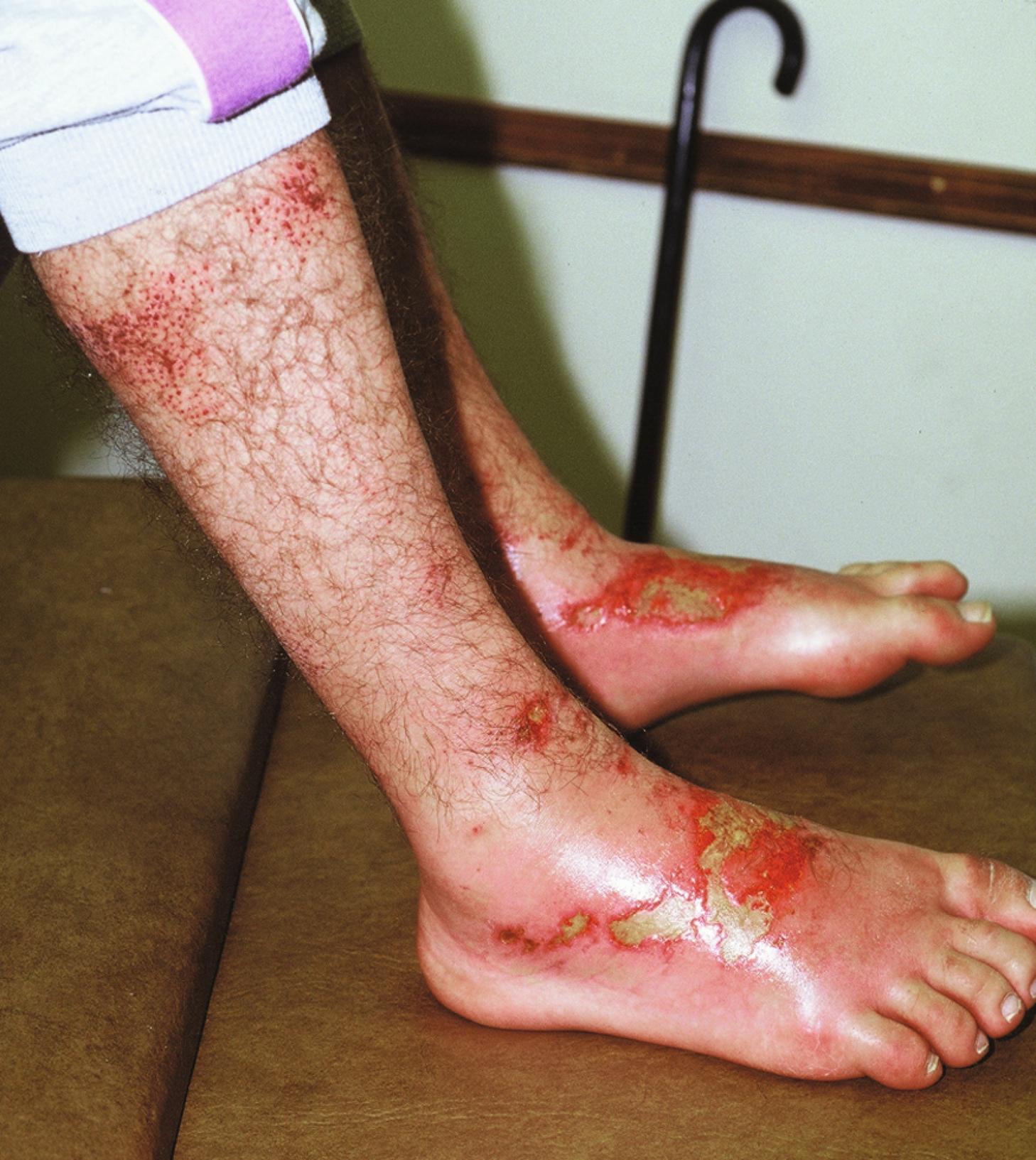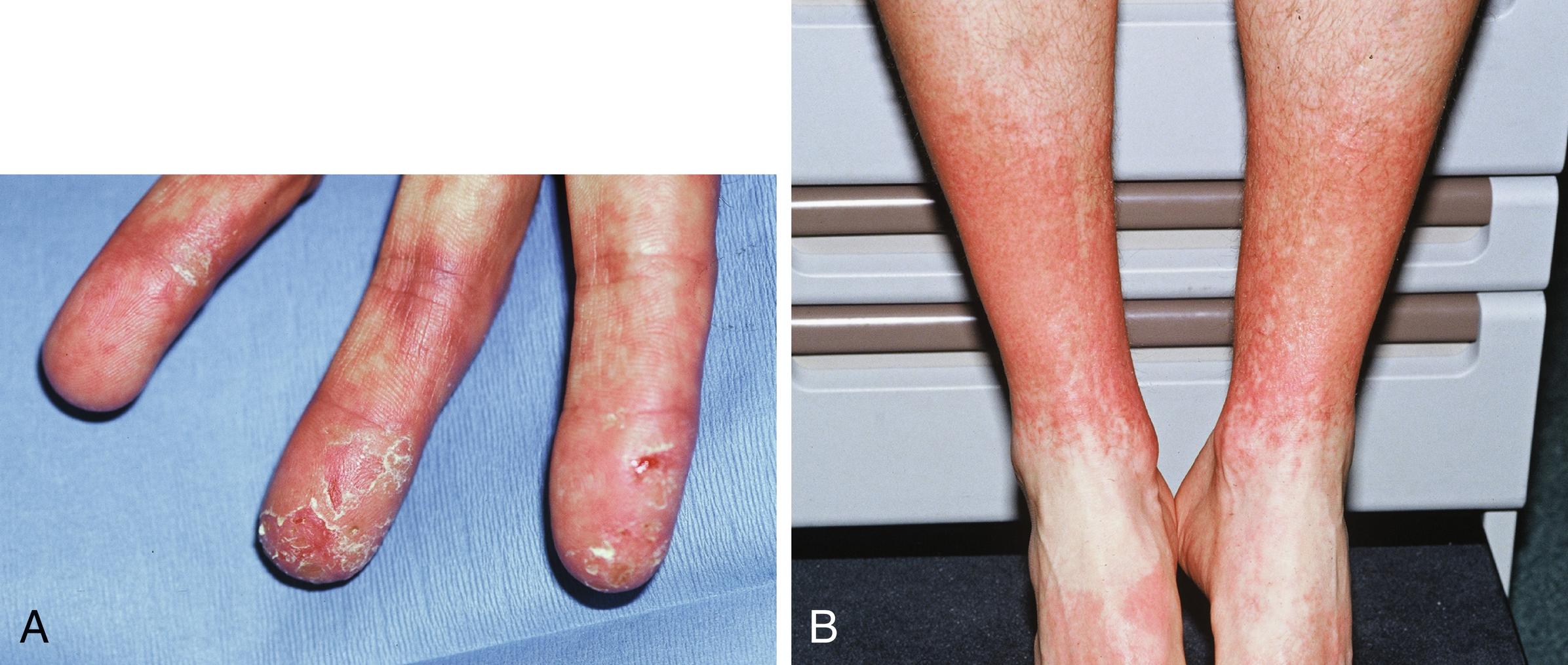Physical Address
304 North Cardinal St.
Dorchester Center, MA 02124
Contact dermatitis accounts for more than 90% of occupational skin disease (OSD). The most common location of job-related contact dermatitis is the hands. It has been historically accepted that 80% of the contact dermatitis cases are irritant ( Fig. 66.1 ), while 20% are allergic ( Fig. 66.2 ). Recent studies challenged this teaching, with up to 40% of work-related skin diseases being allergic contact dermatitis (ACD). However, pure ACD in the occupational setting remains uncommon because an element of irritant contact dermatitis (ICD) is often present. Data from the Bureau of Labor and Statistics show that OSD accounted for 16.5% of all occupational illness in 2005. Some have estimated the true number of cases to be 10 to 50 times higher than that due to underreporting and underdiagnosis. The “standard” patch test screens for only approximately 75% of common allergens, so additional specialized testing with industrial chemicals to which the worker is exposed is often warranted. Testing should only be done with known materials in accepted concentrations.


Lushniak BD. Occupational contact dermatitis. Dermatol Ther. 2004;17:272–277.
Sasseville D. Occupational contact dermatitis. Allergy Asthma Clin Immunol. 2008;4:59–65.
Folliculitis or acne (e.g., due to greases and oils)
Chemical-related depigmentation (e.g., due to germicidal phenolic detergents)
Lichen planus (e.g., from photographic developing agents)
Granulomas (e.g., due to silica or beryllium dust)
Infections (e.g., a dentist contracting herpetic whitlow from a patient with oral herpes)
Photodermatoses (e.g., due to celery psoralens in agricultural workers)
Contact urticaria (e.g., due to raw foods in food service workers)
Personal history of atopic dermatitis is a significant risk factor for OSD. Other preexisting skin diseases with compromised epidermal barriers, such as xerosis or nummular eczema, can predispose a person to contact dermatitis because of enhanced absorption of irritants and allergens through the skin. Poor personal hygiene plays a role if patients neglect to wash off irritating and sensitizing chemicals, prolonging contact time. Yet, overwashing is perhaps a more common problem. The use of harsh soaps and frequent wetting/drying cycles induce chapping and compromises the barrier function of the skin. Use of gloves after washing the hands increases the irritation if residual cleanser exists upon the skin surface. Environmental factors are also important. In hot and humid climes, workers may perspire, which can solubilize particulate matter, enhancing its penetration into the skin. Sweat can also leach out allergens, such as chromates from leather shoes, inducing an ACD. Conversely, low temperature and humidity cause chapping of the skin, which can lead to ICD. Certain “wet work” jobs also are more likely to be associated with OSD, such as healthcare workers, hairdressers, and housekeepers.
Hamnerius N, Svedman C, Bergendorff O, Björk J, Bruze M, Pontén A. Wet work exposure and hand eczema among healthcare workers: a cross-sectional study. Br J Dermatol . 2018;178:452–461. https://doi.org/10.1111/bjd.15813
Belsito D. Occupational contact dermatitis: etiology, prevalence, and resultant impairment/disability. J Am Acad Dermatol. 2005;53:303–313.
Rietschel RL, Mathias CG, Fowler Jr JF, et al. A preliminary report of the occupation of patients evaluated in patch test clinics. Am J Contact Dermatol. 2001;12:72–76.
Become a Clinical Tree membership for Full access and enjoy Unlimited articles
If you are a member. Log in here